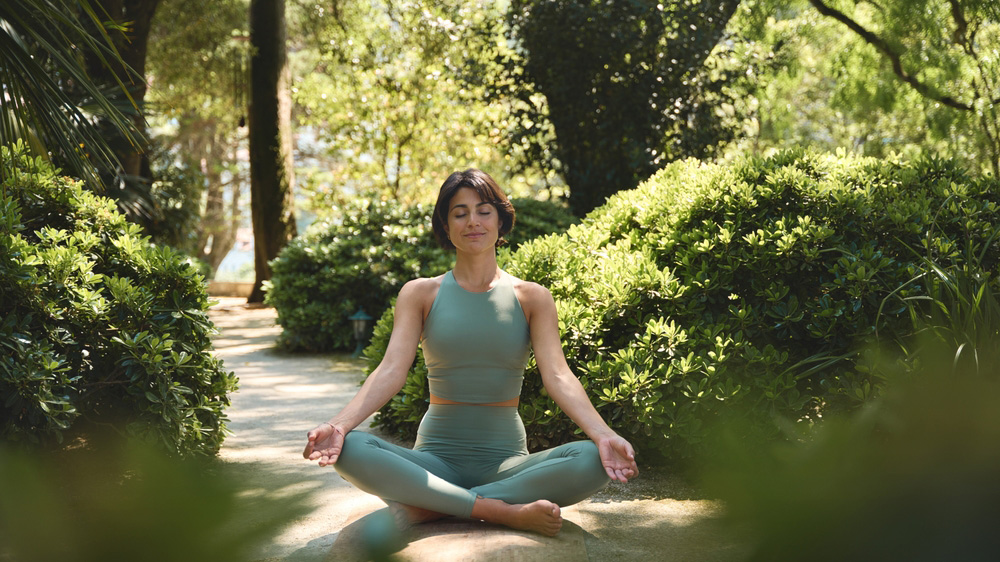Introduction
Take a deep breath, close your eyes… and allow yourself to be carried away into a world where stress fades, where anxiety dissipates, where each posture becomes a gentle caress for the soul. So what could be the impact of Yoga on emotional well-being. It ismuch more than a series of graceful movements, is a true inner alchemy, transforming tensions and turmoil into serenity and harmony. This ancient practice, at the crossroads of meditation and movement, shapes our emotional balance, reconnects us with our deeper essence, and teaches us how to dance with our emotions. But how does it affect our well-being? This is what we are about to explore.
1. Yoga on emotional well-being, a Balm for Emotions
Yoga is not just a sport or discipline: it is an invitation to dive within. Every breath, every posture (asana) acts like a key unlocking emotional blockages hidden in our bodies. Tension in the shoulders? A long-held grudge. A knotted stomach? A repressed fear. Through sequences and conscious breathing, yoga releases these crystallized emotions and allows for inner fluidity.
Heart-opening poses (like Cobra or Camel) help let go of buried sadness, while grounding poses (such as Tree Pose) offer unmatched emotional stability. Simply synchronizing the breath with the movement creates a hypnotic dance where the mind calms, making room for new clarity.
2. The Impact of Yoga on the Brain and Emotions
When you unroll your mat and begin your practice, it’s not just your body that is working: your brain is also transforming. Neuroscience studies have shown that yoga activates the parasympathetic nervous system, responsible for relaxation and well-being. The result? A reduction in cortisol (the stress hormone), an increase in serotonin and dopamine, those wonderful molecules of happiness.
Yoga directly impacts the amygdala, the small brain structure that orchestrates our fears and emotional reactions. With regular practice, it becomes less reactive, making our responses to stressful situations much more measured. Meditation integrated into yoga also promotes neuroplasticity, offering our minds exceptional adaptability and resilience.
3. Yoga and Emotional Management: A Learning in Motion
We’ve all had those days when emotions seem to overwhelm us like an uncontrollable wave. Anger, frustration, sadness… What if yoga were the perfect surfboard to navigate this stormy sea?
One of the great powers of yoga is teaching us to welcome emotions. Rather than fighting them or ignoring them, this practice teaches us to observe them, accept them, and let them dissipate naturally. Yoga Nidra, for example, is a deep relaxation technique that acts as an emotional reset. Pranayama, or the art of breathing, is another wonderful gateway to immediate calm. Alternate nostril breathing (nadi shodhana) balances the brain’s hemispheres and calms inner agitation, while Lion’s Breath (simhasana) helps release repressed tensions.
4. Yoga and Self-Awareness: Towards Inner Transformation
Yoga is much more than just a remedy for negative emotions: it is a true exploration of self. By taking the time to listen to our bodies, sensations, and breath, we sharpen our connection to ourselves. This heightened awareness allows us to spot our emotional patterns, better understand our reactions, and, little by little, choose responses that are more aligned with our well-being.
Over time, yoga becomes a philosophy of life, where we learn to cultivate patience, kindness, and gratitude. Yoga concepts such as Ahimsa (non-violence) or Santosha (contentment) directly resonate with our daily lives and help us experience our emotions with more gentleness and acceptance.
5. Yoga, an Ally Against Anxiety and Depression
Many scientific studies agree on the effectiveness of yoga in reducing anxiety and depression. By combining movement, breath, and mindfulness, it helps break the cycle of negative thoughts and foster a more serene mindset.
Inverted poses, like Shoulder Stand or Headstand, promote blood flow to the brain, stimulating mental clarity and vitality. Restorative yoga, with its gentle, prolonged postures, is especially beneficial for those suffering from chronic anxiety or burnout.
Consistency is key: just a few minutes a day is enough to feel profound and lasting effects on mood and emotional balance.
Conclusion
Yoga is an invitation to emotional freedom, a practice where every breath becomes a journey, every posture a revelation. It teaches us how to dance with our emotions, honor them without being overwhelmed. In a world where stress and anxiety reign, yoga on emotional well-being presents itself as a sanctuary of serenity, a valuable key to regaining deep and lasting balance. So, why not unroll your mat and let the magic unfold? 🧘♀️✨
A mat, a breath, a transformation: what if well-being was just one posture away? 🧘♀️✨
Sources :
- Harvard Medical School – Yoga for mental health – Lien
- National Institutes of Health (NIH) – Effects of yoga on anxiety and depression – Lien
- American Psychological Association (APA) – The science behind yoga and emotion regulation – Lien
- Frontiers in Psychology – Yoga and emotional resilience – Lien
- Mayo Clinic – How yoga helps manage stress and emotions – Lien


